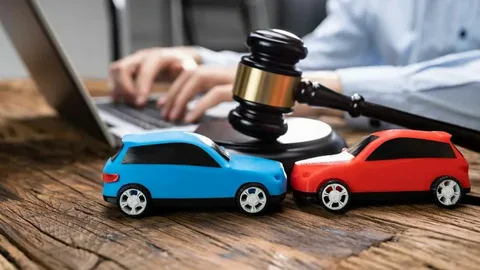Motorcycle accidents, particularly those occurring at intersections, present unique challenges and questions regarding the right of way. Understanding these legal intricacies is crucial for anyone on the road, especially when such knowledge could help in preventing accidents or guiding actions post-incident. This article seeks to demystify the legal perspectives surrounding motorcycle accidents at intersections, providing valuable insights for laypersons potentially navigating these situations.
A Knowledgeable Lawyer is Worth Their Weight in Gold
If you or someone you know has been involved in a motorcycle accident, especially one concerning the right of way at an intersection, it is imperative to seek legal assistance and find a motorcycle accident lawyer in Ocala, FL. A knowledgeable motorcycle accident lawyer can provide the guidance and representation needed to navigate the complexities of your case, ensuring your rights are protected and you receive the compensation you deserve.
Understanding the Right of Way
The concept of “right of way” is fundamental in traffic law, dictating which vehicle has the precedence to proceed first in an intersection scenario. Unfortunately, motorcycles’ smaller size and speed can lead to visibility issues, making right of way misunderstandings a common cause of accidents. Motorcyclists and drivers must recognize the importance of vigilance and clear communication at intersections to avoid these potentially fatal encounters.
Right of Way Laws
Traffic laws are designed to create a predictable flow and ensure the safety of all road users. When approaching an intersection, signs and signals dictate the right of way, but the unique dynamics of motorcycles require extra attention. For example, motorcyclists are often advised to make eye contact with drivers to ensure their presence is acknowledged, reducing the risk of accidents caused by visibility issues.
Common Intersection Accidents
Intersection accidents involving motorcycles frequently occur when drivers fail to notice an oncoming motorcycle and proceed through the intersection. Left-turn accidents are particularly prevalent, where a vehicle turning left at an intersection collides with a motorcycle going straight through the intersection. These accidents underscore the critical need for increased awareness and caution from both motorcyclists and drivers.
Right of Way Disputes
Disputes over who had the right of way are common in motorcycle accident cases, especially when an accident occurs at an intersection. Establishing fault can be complicated, hinging on various factors, including traffic signals, witness testimony, and sometimes, the interpretation of traffic laws by courts.
Investigating Fault
Determining fault in a motorcycle accident requires a thorough investigation. Law enforcement reports, witness statements, and, increasingly, video footage from surveillance or dashcams play pivotal roles in these investigations. These pieces of evidence can help clarify the sequence of events leading to the accident and establish which party had the legal right of way.
Legal Challenges
Motorcyclists face unique challenges in right-of-way disputes. There’s a persistent bias that motorcyclists are inherently reckless, a stereotype that can influence the outcome of legal proceedings. Effective legal representation is crucial for overcoming these prejudices and ensuring a fair evaluation of the facts.
Preventing Intersection Accidents
Preventing accidents at intersections involves both proactive measures by motorcyclists and drivers and the implementation of safer road designs by authorities. Enhanced visibility, awareness campaigns, and education can significantly reduce the incidence of these accidents.
Safety Measures for Motorcyclists
Motorcyclists can take several steps to enhance their safety, including wearing high-visibility clothing, using headlights even during the day, and exercising extra caution at intersections. Defensive driving courses also equip motorcyclists with strategies to anticipate and avoid potential dangers.
Improving Intersection Safety
Municipalities can improve intersection safety through better signage, clearer lane markings, and the installation of advanced traffic control devices. These measures, coupled with public awareness campaigns about the rights and vulnerabilities of motorcyclists, can create safer roads for everyone.
The Role of a Motorcycle Accident Lawyer
A motorcycle accident lawyer specializes in representing clients who have been injured in motorcycle accidents. They understand the nuances of motorcycle laws and can effectively counter the biases motorcyclists often face. From gathering evidence to negotiating with insurance companies, a lawyer will advocate on your behalf every step of the way.
Why Legal Representation Matters
Navigating the aftermath of a motorcycle accident can be overwhelming. Legal representation ensures that your case is handled professionally, increasing the likelihood of a favorable outcome. A lawyer can help you understand your rights, evaluate the strength of your case, and fight for the compensation you need to recover from your injuries.
Conclusion
Motorcycle accidents at intersections, particularly those involving questions of right of way, require careful legal interpretation and an understanding of specific traffic laws. Both motorcyclists and drivers share the responsibility of making our roads safer by being vigilant and informed. Should you find yourself in the unfortunate situation of a motorcycle accident, remember that legal resources are available to help you through the recovery process. Consulting with a motorcycle accident lawyer, particularly one experienced in handling cases in Ocala, FL, is a crucial step towards ensuring your rights are upheld and you are justly compensated for your injuries and losses.





